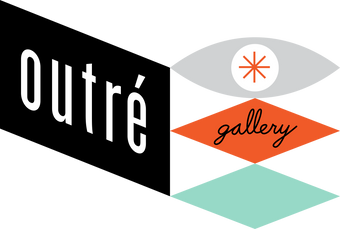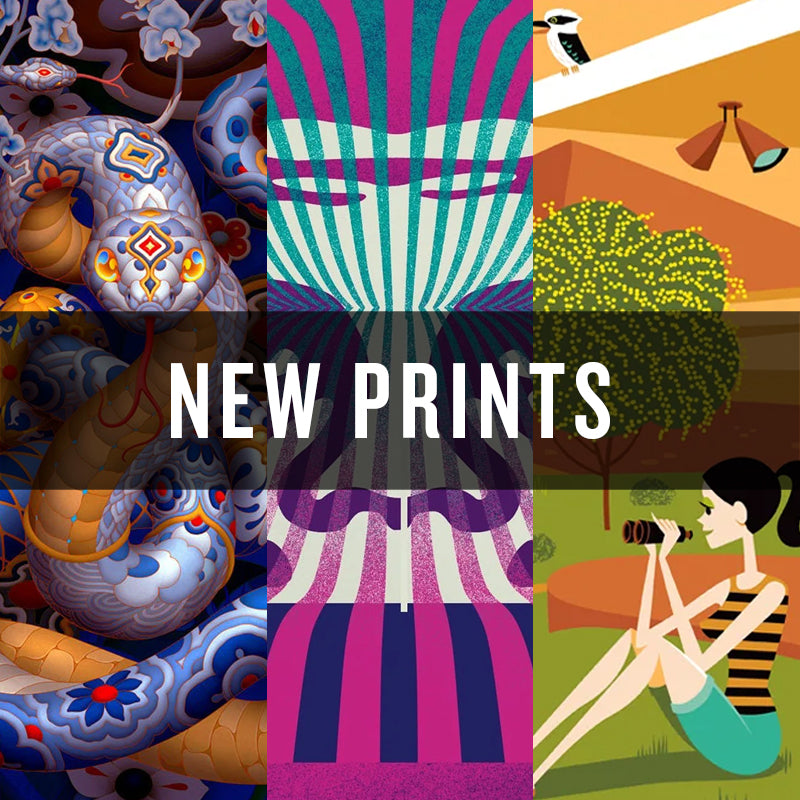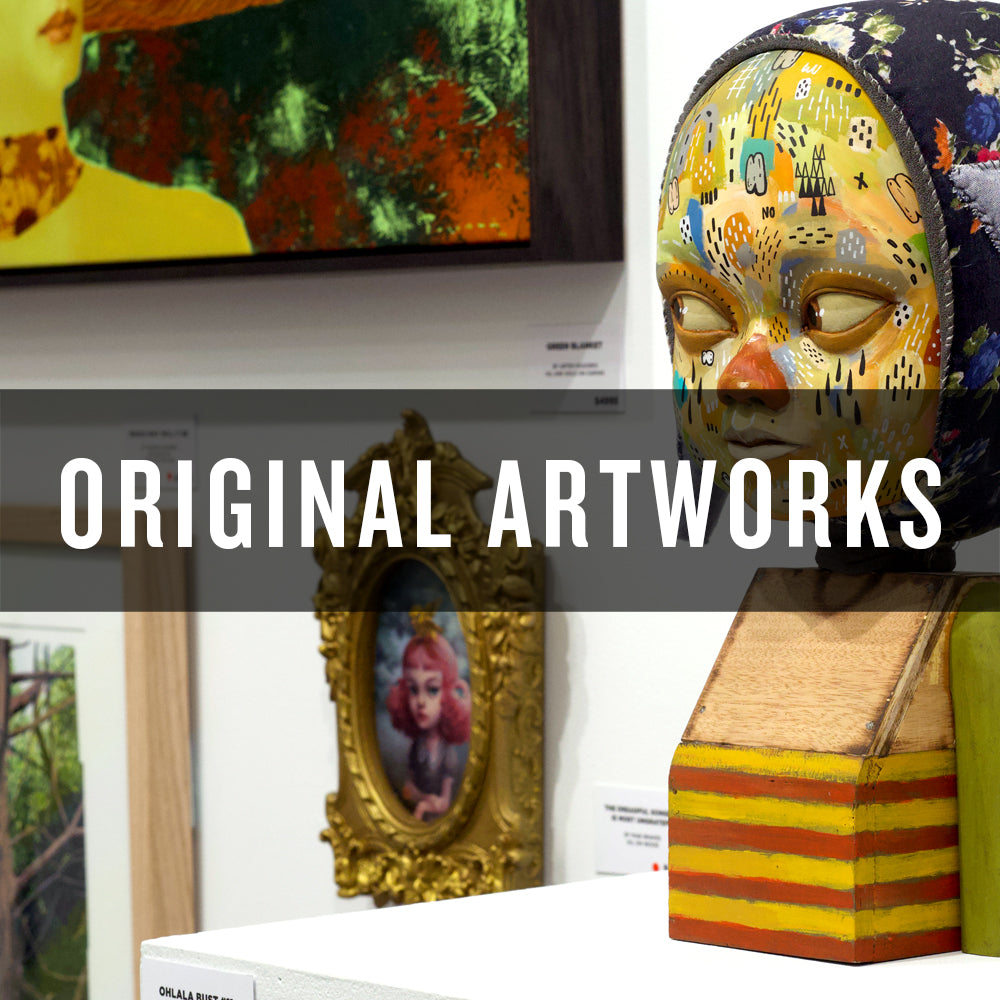
Daniel Isles was born in England, and currently lives in Hokkaido, Japan. He is an artist who works on illustrations and comics under the pseudonym Dirty Robot. He is known for his stylish characters and prolific work ethic.
We spoke to Daniel about his streetwear influences, the inspiration gained from becoming a father, and the characters in his worlds.
Interview by Viet-My Bui. Photos supplied by Daniel Isles.
Can you tell us your journey towards your current art practice?
For as long as I can remember I’ve always been drawing and being able to do it for a living is a great pleasure and a real blessing. I studied art & design and then graphic design in college, before moving on to illustration and animation in university.
How did your childhood shape your pathway towards creating art? What type of influence did your parents have?
When I was younger I’d often create toys and draw comics with my younger brother and cousins. If there was a figure we were missing or didn’t have, we’d just make our own version using materials we could muster around the house or just take a trip to the local corner shops for card supplies to pick up what we needed. We’d make all kinds of things, like fortresses, vehicles—we even created our own handhelds with original games that had removable cartridges. Looking back, it seems quite weird considering there were real video games in the house, but it was the creative element where we had the most fun. After leaving school, I was lost in the wilderness for a while. If it wasn’t for my mother’s support, I’m not sure where I’d be today. She literally took me to every college in the city for interviews—only one from the bunch we visited had accepted me—so, I enrolled and never looked back.

You were born in the United Kingdom and now reside in Japan. What motivated you to move abroad, and how do the mix of cultures past and present manifest in your work?
That’s right, I was born in the UK, I was around 10 years old when we moved to Birmingham. Back then it was an awesome life changing moment, because we were moving in with our grandmother.
Like many people, my access point to Japanese culture was imported via video-games, manga and anime. When my older cousin gave me a copy of Fist of the North Star, that changed everything. It totally blew my mind to think animation like this was being produced. From that moment, I knew I had to live and work in Japan some day.
The different cultures manifest in my work because of life experiences and by combining these things with stuff I genuinely like. It’s funny because when I was living in the west, I looked towards the east for inspiration and now I’m living in the east, I look to the west.
You have a background in streetwear design and this influence is clearly shown in your stylish characters. Where do you get inspiration for your character's costumes that are often a mix of urban and cyberpunk?
Around the mid 2000s I was deep in to streetwear/apparel, which started out with just t-shirts. It wasn’t until my friends and I started dabbling with different materials where things began to get really interesting within the cut and sew arena. This always stuck with me and so I basically incorporate garments I wish I could wear or draw stuff we didn’t manage to produce back then.

Can you tell us more about your characters and the world they live in?
Each piece tells its own story, but I’ve always wanted to create a world where my characters could all co-exist, which is actually a project that I’m currently working on now—to include almost all the characters I’ve drawn over the past few years.
Your #365project was a major undertaking that involved creating an artwork everyday, for 365 days. How pivotal was this year for you, and how did it help carve your current art practice?
That year literally changed my life. Drawing consistently for a year generated a lot of attention, which is what you need as an artist— you need the eyes on your work, so people know you exist. The project in essence was started in order to gain a level of consistency while building up a body of work, while trying out new ideas and techniques I had lingering in my head for years. Overall I was quite happy with the project in its complete form, but looking back I wish I’d spent more time exploring different mediums, drawing more animals/insects and vehicles.
The great thing about doing these sort of challenges, whether it’s 30 days, 6 months or a year, you notice improvements in your artistry. I noticed my aesthetics had changed and my approach to drawing human anatomy had improved. Although this is an ever changing process, it was interesting to see how much development was made in just a single year. This experience helped to shape my current practice up to this point in time, but now, I’m about ready to explore new avenues of creating.
How has becoming a father influenced your approach to your art and your workflow over the past few years?
I definitely feel like my focus has levelled up and having two daughters I’m a lot more conscious about the type of work I put out. My daily schedule has been constantly changing over the past few years. Just as I begin to get used to a new routine, I have to adapt or change my workflow completely, to accommodate my daughters. The great thing is, they keep me focused as I mentioned and inspire me on a daily basis— in fact they influenced the pieces for the entire Children exhibition.

Tell us more about the concept behind your upcoming show, Children.
As mentioned previously, this body of work was inspired by my daughters. Working from my home studio surrounded by all the noise and playing, it all came naturally and gave me ideas to include elements from my own childhood experiences. Originally I was working around the concept ‘Children are the Future’ but I felt that it was limiting my scope and decided to just keep it simple, with a broader brush.
Your show features artwork created using Posca pens. What inspired this departure from your digital work?
I always draw traditionally, but almost always colour digitally unless producing original pieces. For this show I opted to use Posca markers because the colours pop in a way that give the pieces a sort of childlike feeling, which is bright and fun.
In these uncertain times, what has kept you grounded and creative?
Things have been tough globally, personally and professionally. My family have truly been my bedrock and have really kept me going mentally and creatively.
Thank you for your time, Daniel. We can't wait to see your show.
Children by Dirty Robot
Feature Show
Outré Gallery Fitzroy
19 June – 8 July 2020
Facebook Event



